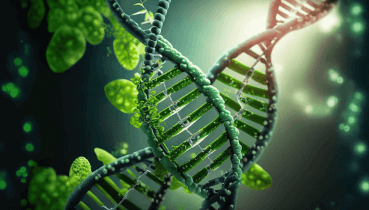Question
a.
Arrhenius equation
b.
Lineweaver Burk equation
c.
Half-life
d.
Gibbs-Helmholtz equation
Posted under Enzyme Technology
Interact with the Community - Share Your Thoughts
Uncertain About the Answer? Seek Clarification Here.
Understand the Explanation? Include it Here.
Q. The equation \(t_{1/2}=\frac{0.693}{k_d}\) represents ___________
Similar Questions
Explore Relevant Multiple Choice Questions (MCQs)
Q. If the rate of denaturation of enzyme Y is 1.5*10⁻⁴/min, then the half-life of enzyme Y is ______ mins.
View solution
Q. What is the rate of denaturation kd, if the half-life of an enzyme catalyzed reaction is 15.6 mins?
View solution
Q. The pH at which half the groups of a compound are ionized is referred to as _________
View solution
Q. If Kₐ for acetic acid is 1.78*10⁻⁵, the pKₐ of acetic acid is _________
View solution
Q. Substances which reduce the rate of enzyme catalyzed reactions are known as ____________
View solution
Q. The following rate equation represents _____________ inhibition.
\(V=\frac{V_{max} [S]}{K_m (1+\frac{I}{K_i})+[S]}\)
View solution
Q. Uncompetitive inhibition is most noticeable at low substrate concentration and can be overcome at high substrate concentration.
View solution
Q. Inhibition of invertase by sucrose falls into which category of inhibition?
View solution
Q. ______________ inhibition represent the following rate equation.
\(V=\frac{\left (\frac{V_{max}}{1+\frac{[I]}{K_i}}\right )[S]}{K_m+[S]}\)
View solution
Q. The __________ inhibition gives the following rate equation.
\(V=\frac{V_{max} [S]}{K_m+[S](1+\frac{[S]}{K_s})}\)
View solution
Q. In competitive inhibition, what happens to Vₘₐₓ and Kₘ if [I] = Kᵢ?
View solution
Q. Which of these is correct for mixed inhibition?
View solution
Q. What happens to Vₘₐₓ and Kₘ in case of uncompetitive inhibition when I = Kᵢ‘?
View solution
Q. If I = Kᵢ = Kᵢ‘, then what will happen to Vₘₐₓ and Kₘ when inhibitor acts non-competitively?
View solution
Q. Mercury causes irreversible inhibition.
View solution
Q. The following rate equation is given by ___________ inhibition.
\(V=\frac{\left (\frac{V_{max}}{1+\frac{[I]}{K_i’}}\right ) [S]}{\left (\frac{K_m}{1+\frac{[I]}{K_i’}}\right )+[S]}\)
View solution
Q. The rate equation for _______________ inhibition is given by \(V=\frac{V_{max} [S]}{K_m (1+\frac{[P]}{K_p})+[S]}\).
View solution
Q. Inhibition of lactase by galactose is an example of which kind of inhibition?
View solution
Q. Loss of activity which may be restored by the removal of inhibitor is referred to as ___________
View solution
Q. In the following diagram, what does enzyme Z represent?
View solution
Recommended Subjects
Are you eager to expand your knowledge beyond Enzyme Technology? We've handpicked a range of related categories that you might find intriguing.
Click on the categories below to discover a wealth of MCQs and enrich your understanding of various subjects. Happy exploring!








